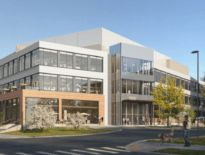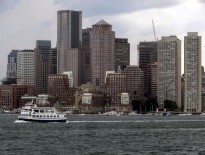Massachusetts will retain all nine of its U.S. House seats following the release of new Census Bureau data Monday that showed the state’s total population topping 7 million for the first time, up from 6.5 million in the 2010 census.
Secretary of the Commonwealth William Galvin, who oversees the census in Massachusetts, said he was pleased with the count.
“We’ve never topped 7 million,” Galvin said. “It’s good news for Massachusetts, We kept our congressional districts. We kept our electoral votes. We put a lot of effort into this.”
The state lost a congressional seat in the 2010 census. The number of seats fell from 10 to nine after the state’s more modest population growth in the prior decade failed to keep pace with growth in other parts of the country.
The state grew at a rate of 7.4 percent over 10 years, which equaled the country’s growth rate and outpaced the New England average of 4.1 percent growth.
While the 2020 Census’ count of housing units won’t be available for some months as the bureau’s data analysts continue to process the survey, 2019 estimates put the state’s total number of housing units at 2.93 million, up from 2.81 million in the 2010 census, a gain of only 120,091 units in nine years. By comparison the state added 482,288 over the same time frame, the Census Bureau estimates, although the data released Monday did not include the number of households, a key statistic in determining housing demand.
State lawmakers will have to draw new congressional district lines based on the new population numbers, with the goal of each district having the same number of residents – about 781,100.
Within the state, preliminary numbers show population growth in the eastern portion of the state around Boston area outpacing the growth in western Massachusetts, Galvin said.
The district with the highest estimated population is the 8th District currently represented by Rep. Stephen Lynch which includes portions of Boston, Brockton, Quincy and 21 towns in southeastern Massachusetts. The district has an estimated population of about 822,800.
The district with the lowest estimated population is the 1st District represented by Rep. Richard Neal, which covers about a third of the geography of the state and includes the cities of Springfield, West Springfield, Pittsfield and Holyoke. The district has an estimated population of about 736,500.
Official population data needed to redraw districts is expected to be released by Sept. 30.
The loss of seats after earlier census counts was part of a historic trend for Massachusetts.




 |
| 


